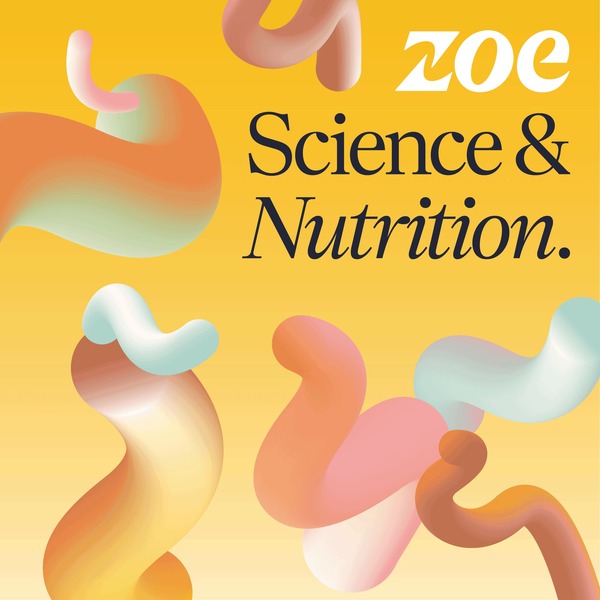Summary of ZOE Science And Nutrition Podcast Episode: The great calorie deception: Are food labels misleading?
— Description —
Calories on food labels may not accurately reflect the actual caloric availability of certain foods due to factors such as food complexity and unique gut microbes The process of grinding nuts affects energy absorption, leading to differences in calorie intake from ground versus whole nuts Dr
Sarah Berry emphasizes focusing on the healthiness of food rather than solely on its energy content, as calorie counting may be inaccurate for all foods and ineffective for weight loss maintenance The Atwater factors used to calculate calories on food labels are outdated and do not account for the actual caloric availability of certain foods Research shows that the calorie content of nuts is overestimated by about 30% based on the Atwater factors, and the caloric availability can vary even within the same food
Food structure affects calorie absorption, making calorie counting inaccurate for all foods and ineffective for weight loss maintenance Dr Sarah Berry's studies demonstrate that whole nuts and large oats have different health impacts despite similar calorie content, emphasizing the importance of considering food structure in assessing food healthiness.

The great calorie deception: Are food labels misleading?
Key Takeaways
- Calories on food labels may not accurately reflect the actual caloric availability of certain foods.
- The process of grinding nuts affects energy absorption, leading to differences in calorie intake from ground versus whole nuts.
- Individuals absorb different amounts of calories from the same food due to factors such as food complexity and unique makeup of gut microbes.
- Calorie counting may be inaccurate for all foods and ineffective for weight loss maintenance due to the impact of food structure on calorie absorption.
- Dr. Sarah Berry emphasizes focusing on the healthiness of food rather than solely on its energy content.
Rethink Calorie Counting: It's Inaccurate
- Calories are a measure of energy in food and are used to quantify the energy in a specific food or meal.
- The calorie content of food is determined using a bomb calorimeter, but the net calorie content is not the same as the calories absorbed by the body when the food is eaten.
- The Atwater factors, used to calculate calories on food labels, are outdated and do not account for the actual caloric availability of certain foods.
- Protein takes energy to digest, so the protein Atwater factor of 4 is about a 30% overestimation.
- Research shows that the calorie content of nuts is overestimated by about 30% based on the Atwater factors, and the caloric availability can vary even within the same food.
Grinding Nuts Enhances Nutrient Absorption
- The process of grinding nuts breaks the cell walls, leading to the release of lipids and other nutrients, allowing for more energy absorption, which changes the calorie intake from ground versus whole nuts.
- Our understanding of food and nutrition has evolved rapidly, shifting from a focus on nutrients to considering the thousands of chemicals and food structure that modulate energy absorption and health impacts.
- Current food labels may be less trustworthy as they oversimplify and don't account for differences in energy absorption based on food structure. More in-depth tests on individual foods are needed for accurate results.
Calories on Labels Are Deceptive
- If you take a ground nut that's been commercially ground, then you get nearly all, about 95 to 100% of the energy released. So that's why you'll absorb all of the energy from the ground nut.
- There's a huge difference between eating a real nut and eating some sort of processed food where the nut has been ground in a factory. Because you're fracturing all of these cells, all of the energy and fat is bursting out and therefore it's available in your gut for your body to absorb all of that.
- It doesn't reflect how unique we are as individuals. There is no such thing as Mr. or Mrs. Average.
- One person might absorb 62 calories from the handful of nuts. Another person might absorb 168 calories from exactly the same handful of nuts.
- This is a difference, over a week between individuals who are having whole almonds of 730 calories.
- The label won't tell them that. The inaccuracy of the label itself because of the complexity of the food. The other is the inaccuracy because of the complexity of us as individuals.
- There are really big differences between how different people respond to the foods they eat. And I think there's lots of factors, right, that you and Tim and others have explained may sit behind that from who we are, our age and our sex, what lifestyle we lead, sleep and exercise, the foods that we've eaten.
- The unique makeup of our microbes impacts how our gut digests our food. It can actually also affect the amount of calories that we're absorbing.
- Calories on the back of pack labeling are deceptive, because they don't show us how much energy we're getting out of the food and how our responses are so different between different people. These calories also don't really tell us anything about how healthy this food is for us.
Food Structure Impacts Calorie Absorption
- Dr. Sarah Berry's studies show that whole nuts lead to a 75% lower increase in circulating blood fat compared to ground nuts.
- Similarly, large oats result in a 50% lower increase in blood sugar compared to finely ground oats, impacting health differently despite similar calorie content.
- Food structure affects calorie absorption, making calorie counting inaccurate for all foods and ineffective for weight loss maintenance.
- Dr. Sarah Berry urges focusing on the healthiness of food rather than solely on its energy content.